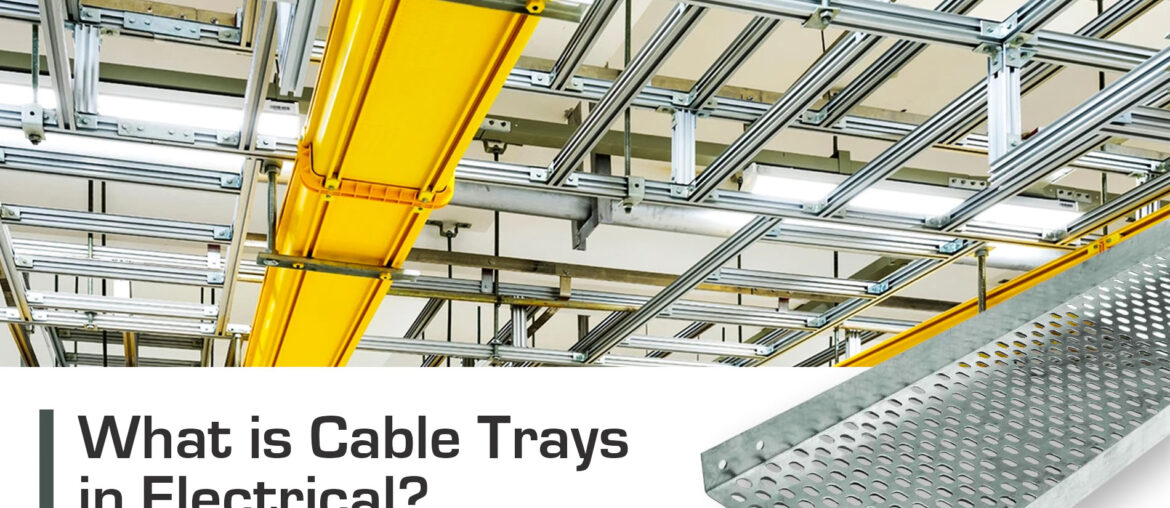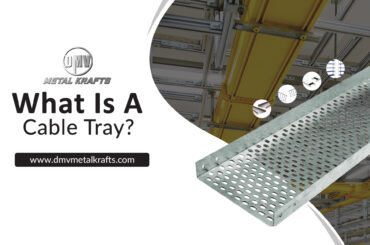Cable Trays are rigid structural system, comprising of unit or assembly of units/sections and associated fitting for protecting, supporting, routing and securely fastening the cables.
Why Cable Tray Systems are used
Cable Tray Systems are used to support cables for power distribution, control and communication in cable management in commercial and industrial application as an alternative to open cabling or conduct system.
The Cable Tray Systems are very useful where changes in installations are anticipated frequently. The upgradation, expansion, re-routing or relocating cabling networks can be achieved by changing/laying new cables in the existing cable tray systems without much disturbance or deviation. Besides providing mechanical support, the Cable Tray facilitate perfect routing path for both overhead and underground cables.
Cable Tray Systems act as bridging system to suspend and support insulated power/control/communication cables.
The Cable Tray Systems are in general open type allowing efficient heat dissipation and easy access for inspection.
Advantages of Cable Tray Systems
- Low Maintenance
- Highly Durable
- Space Saving
- Supreme Quality
- Protection
- Available in several width, heights and lengths
- Corrosion Resistant
The most commonly used Cable Trays are:
- Solid bottom type
- Perforated type
- Ladder type
- Wire mesh
- Channel type
The maximum protection is provided by solid bottom trays but no ventilations is possible for dissipation of heat. The installation also require cutting of trays and the fitting etc for entry/exit of cables.
The Perforated Cable Trays, having opening in the bottom of trays, allow air circulation, water drainage and dust fall. The slots or holes of ventilation opening may be used for small cable entry/exit.
The Ladder Trays are provided with several bars, similar to the rungs of a ladder, at regular intervals of 100mm to 300mm for supporting the cables.
The Perforation and Ladder Trays can also have solid covers to protect cabling from falling objects, dust etc. The tray covers for outdoor used may be provided with sloppy shape to shed the debris including dust, ice or snow.
The Lighter Cable Trays are in use where large number of small size cables such as telephone or computer network cables. These cable trays can be made of wire mesh, also called Cable Baskets.
The Channel Trays are used for installation with limited number of cables when conduit is undesirable, the cable exit is made though ventilation opening. The channel trays may absolve some degree of vibrations also, some degree of vibrations are to be absorbed. The channel trays are also utilized for cable drops and branching from the backbone cable tray systems.
Material
The most common Cable Trays are made of Powder Coated Sheet, Galvanised Steel, stainless steel, aluminum or fibre glass reinforced plastic.
The material of cable trays is chosen for a particular use based on its application and environment. The galvanised steel trays may be fabricated out of pre galvanised sheet or hot dipped galvanised after fabrication.
The stainless steel and fibre glass and fibre glass reinforced plastic trays are used where the environment in corrosive and aesthetic look is desirable.
Generally the MS Cable Trays are painted or powder coated for rust resistance and longer life. It also give good look after installation. The aluminium Cable Trays have excellent corrosion resistance in chemical environment are in use in Petro-Chemical Plants, Paper Mills etc. Sometimes marine grade aluminium which is copper free in also used.
DMV Metal Krafts is a leading all type cable tray manufacturer supplier and exporter. DMV also provide services for Laser Cutting, Metal Bending, Sheet Metal Fabrication, Sheet Metal Shearing, Powder Coating, etc
dmv metal krafts


